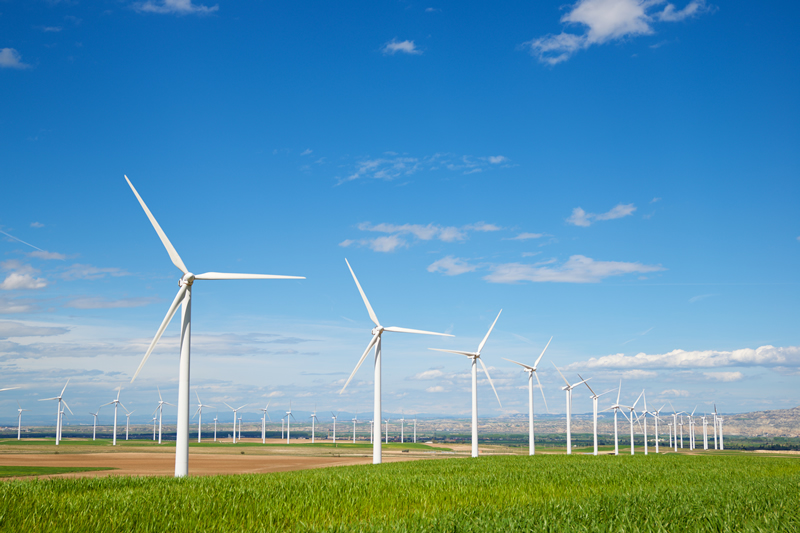World's First Wind Powered Carbon Removal Plant Planned in Texas
27
A groundbreaking project in Texas could become the world’s first direct air capture (DAC) facility powered primarily by on-site wind energy. The initiative, announced by three European companies, aims to address one of the biggest challenges in carbon removal - high operating costs. By using behind-the-meter wind power electricity generated and consumed on site, the facility will avoid grid reliance and benefit from low-cost, renewable energy.

Slated to begin operations in 2028, the plant is designed to eventually remove up to 500,000 metric tons of CO2 per year, more than the annual emissions of a typical natural gas power plant, according to EPA data. This would make it the largest DAC facility announced to date, though several similarly scaled projects are under development.
The project is a collaboration between Return Carbon, a Dutch development and investment firm; Skytree, a Netherlands-based DAC technology company; and the North American renewables division of EDF, the French state-owned utility. Captured CO2 will be permanently stored underground by Verified Carbon, a Texas-based firm. “This is a new framework we've agreed upon with EDF,” said Martijn Verwoerd, co-founder and managing director of Return Carbon. “That’s why we’re announcing it now.” As scientists stress the urgent need to reduce carbon emissions, mainly from burning fossil fuels, there is growing consensus that carbon removal technologies like DAC are also essential to draw down existing CO2 already in the atmosphere.
Here is a summary of the key benefits of Carbon Capture and Storage (CCS):
- Significant Emissions Reduction
- Captures up to 90-95% of CO2 emissions from industrial sources (like power plants, steel, cement, and ships).
- Helps reduce emissions from hard-to-abate sectors where alternatives are limited.
- Supports Net-Zero Goals
- Essential for achieving net-zero emissions by 2050, especially in combination with other technologies.
- Can enable negative emissions when paired with bioenergy (BECCS).
- Enables Continued Use of Existing Infrastructure
- Allows continued use of fossil fuel assets (e.g., power plants, ships) with reduced climate impact.
- Helps manage the transition period before full decarbonisation technologies are ready.
- Industrial and Economic Benefits
- Preserves industrial competitiveness by offering a decarbonization pathway for emissions-intensive industries.
- Can create jobs in engineering, infrastructure, and CO2 transport and storage sectors.
- Enhances Blue Hydrogen Production
- CCS is critical for producing blue hydrogen (hydrogen from natural gas with captured CO2), a lower-carbon energy carrier.
- Flexible Deployment
- Can be applied to stationary sources (factories, refineries) and mobile ones (ships, in emerging technologies).
- Stored CO2 can be injected into depleted oil/gas fields or deep saline formations.
CCS is a critical tool in the climate solution portfolio, especially for cutting emissions in sectors that can’t easily switch to renewables. It’s not a silver bullet, but it's vital for buying time and achieving deep decarbonisation.
#Protea #Emissions #Monitoring #CEMS #FTIR #Gas #Analysers #Shipping #Marine #Carbon #Capture
Other Articles
Global Underground CO2 Storage Data Offers Hope Amid Rising Emissions
01
IMO Postpones Adoption Of Global Net-Zero Shipping Framework
04
Pioneering Carbon Capture Projects Ready For Construction
03
Methanol & Ammonia Deemed Ready As Zero-Emission Shipping Fuels
01
Carbon Capture Storage Reaching A Turning Point In Decarbonisation
13
CCS To Capture 15% Of Shipboard Carbon Emissions By 2050
29
Global Shipping Industry Struggles To Navigate Net Zero Transition
21
Carbon Capture Surges as Economics Policy & Industry Demand Align
14
GHG Emissions At Ports On The Rise Despite Initiatives
07
Carbon Capture Utilisation & Storage In A Nutshell
30